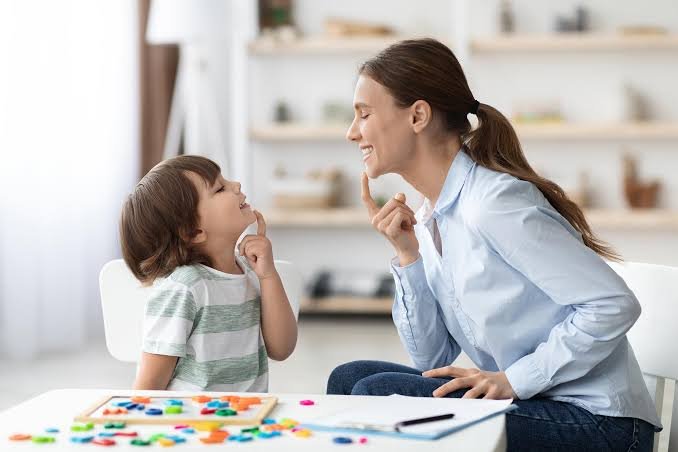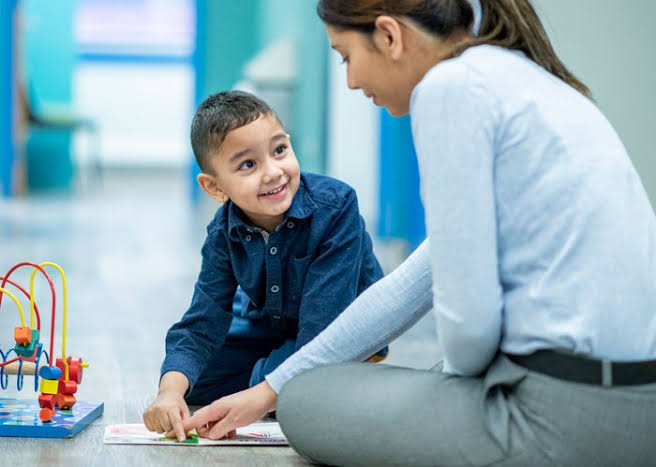What is Applied Behaviour Analysis (ABA)?
Applied Behaviour Analysis (ABA) is an approach to understanding and changing behaviour. It’s not a specific therapy itself, but a range of different strategies and techniques that can be used to help autistic people learn new skills and behaviour.
When ABA techniques are used with young autistic children, it’s often called Early Intensive Behavioural Intervention (EIBI).
For whom Applied Behaviour Analysis (ABA) is used for?
Applied Behaviour Analysis (ABA) teaching techniques can be used for autistic children and children with other developmental disabilities.
 For what Applied Behaviour Analysis (ABA) used for?
For what Applied Behaviour Analysis (ABA) used for?
The Applied Behaviour Analysis (ABA) approach and its techniques can help autistic children improve their social skills, self-care skills, communication skills, play skills and ability to manage their own behaviour. It can also help to reduce behaviour like inattention, aggression and screaming. ABA can help autistic children develop independence, but it shouldn’t be used to make children ‘mask’ their autism or ‘fit in’ with social norms.
From where does Applied Behaviour Analysis (ABA) come from?
Applied Behaviour Analysis (ABA) is based on learning theory, which comes from the field of behavioural psychology.
What is the idea behind Applied Behaviour Analysis (ABA) for autistic children?
These are the key ideas behind Applied Behaviour Analysis (ABA):
-
- Human behaviour is influenced by events or stimuli in the environment.
- Behaviour that’s followed by positive consequences is more likely to happen again.
ABA uses these ideas to help autistic children learn new behaviour. It does this by giving children positive consequences for new behaviour.
What does Applied Behaviour Analysis (ABA) for autistic children involve?
Programs of (ABA) generally involve:
-
- Assessing a child’s current skills and difficulties
- Setting goals and objectives – for example, learning how to say ‘hello’
- Designing and implementing a program that teaches the ‘target’ skill
- Measuring the ‘target’ skill to see whether the program is working
- Evaluating the program itself and making changes as needed.
ABA can focus on a specific behaviour, like repeatedly taking off seatbelts in the car, or it can work more broadly on a range of developmental areas at the same time, like communication, self-care and play skills. ABA programs use a range of teaching techniques to help autistic children learn new skills. Programs might also use everyday interactions as opportunities for children to learn.
Children are given plenty of opportunities to practice new skills. As they learn skills, more skills are added to their programs. Over time, skills are combined into complex behaviour, like having conversations, playing cooperatively with others, or learning by watching others.
Depending on their needs, children can do ABA programs in a one-to-one or small group format at a centre, at home or in the community.
There are many different styles of ABA, ranging from very structured and rigid to more flexible.
ABA programs for young autistic children usually involve more than 20 hours of therapy per week. Research has shown that this intensity is how ABA programs achieve outcomes.
ABA programs should recognise autistic children’s right to stim (repetitive or unusual movements or noises) or move in ways that are physically comfortable. They should involve free time, relaxing activities and opportunities for children to have their emotional needs met. ABA programs shouldn’t involve punishment.

Applied Behaviour Analysis (ABA) is an effective approach for teaching a range of skills to autistic children. Quality research shows that it can have positive effects on autistic children’s communication, cognitive and behaviour skills.
Given the variation in how ABA is applied, however, you might need to check the outcomes of specific programs to judge whether they’re right for your child. Quality research shows that Applied Behaviour Analysis (ABA) can help autistic children learn new skills and behaviour.
Who practices Applied Behaviour Analysis (ABA)?
Various professionals offer Applied Behaviour Analysis (ABA). Programs should include an experienced ABA practitioner who oversees the program, as well as staff who work directly with your child. These staff are sometimes called behavioural therapists or behaviour interventionists.
Practitioners don’t need formal qualifications to practice ABA therapy. It’s a good idea to consider the qualifications and experience of any providers you’re interested in.
Teachers, parents, psychologists and other allied health professionals can all use ABA techniques and strategies once they’ve been trained by someone with the appropriate expertise.
Where can you find an ABA practitioner?
Your general practitioner or one of the other professionals working with your child can help you find a provider.
Parent education, training, support and involvement-
If your child is in an Applied Behaviour Analysis (ABA) program, you’ll play an active role in your child’s program. You’ll work with the ABA practitioner to develop and prioritise your child’s learning goals. Often, ABA practitioners provide parent training and support for parents, siblings and extended family.


